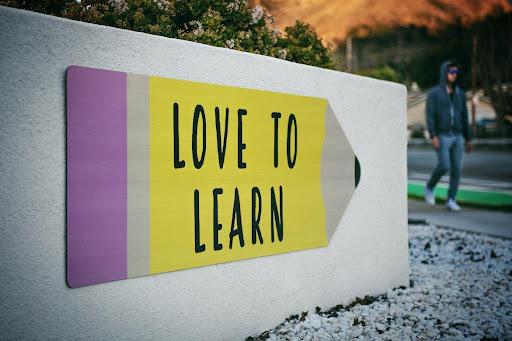Educating modern students is a complex mission that requires an effective balance between challenging coursework and supportive guidance. The world has changed drastically in the last decade or so, with new innovations in technology, new methods of collaboration, and different sets of skills needed for success than ever before.
With this rapid advancement comes tremendous opportunities for our current student population, but also plenty of potential pitfalls if not handled correctly. To ensure that today’s learners are receiving the best education possible to prepare them for their future endeavors, it is important to understand the kind of learning environment which produces the best results – what teaching approaches are most successful?
What types of activities engage students and give them a sense of purpose? How can we use technology to support high levels of learning? All these questions will be explored in this blog post as we analyze what kind of educational approach yields modern-day success stories.

Different Types of Education Models Available
Education is a vital aspect of our lives, and there are various education models available. Understanding these models can help you choose the best option for you or your child. The most common education models include traditional schooling, private schooling, homeschooling, and online schooling.
Traditional schooling usually involves attending a physical school and learning under the guidance of a teacher in a classroom setting. Private schooling, on the other hand, allows parents to choose a school with a specific educational philosophy or teaching approach. According to the people from SVHS, many students prefer watching videos to reading textbooks. Homeschooling involves teaching a child at home, while online schooling allows students to complete their education entirely online.
Knowing the different education models available and their unique characteristics can help you make informed decisions about your education or that of your child. Plus, with the right resources and tools, you can provide educational experiences that are tailored to each individual student’s interests, needs, and goals.
Student Learning Styles
When it comes to creating effective educational models, it’s important for educators to take into account the unique learning styles of each student. We all absorb information in different ways, with some students being visual learners who prefer to see information in graphs and charts, while others are more auditory and need to hear information to truly understand it.
By understanding these individual learning styles, educators can adapt their teaching approaches to ensure that all students are able to thrive and excel in their studies. As such, it’s important to consider how student learning styles can influence education model choices, and how these choices can ultimately impact the academic success of students.
Advantages and Disadvantages of Traditional Learning
As the world is evolving, so are the methods of learning. Traditional, online, and blended learning have become the go-to options for students who want to gain knowledge. Traditional learning is the conventional mode, where a teacher conducts lessons in a classroom setting. However, with the advancement of technology, online learning has taken the education world by storm.
It offers convenience, flexibility, and accessibility to anyone who has access to an internet connection. Blended learning combines the best of both traditional and online learning methods, providing a balance between face-to-face interaction and web-based instruction.
While these learning methods have their advantages, they also face a fair share of setbacks. In this paragraph, we will delve deeper into the advantages and disadvantages of each method, aiding you in choosing the approach that best suits your learning needs.
Analyze the Cost of Different Educational Models
Education is a crucial aspect of every society and thus demands a considerable investment. As education systems continue to evolve around the globe, the debate on the cost of different educational models rages on. Today, we have a vast range of educational models, each with its own cost implications.
Traditional brick-and-mortar schools, online schools, homeschooling, and hybrid models are some of the most popular educational models today, each with its own set of advantages and disadvantages.
While some models may appear to be cheaper than others, it’s crucial to examine the long-term effects and quality of education before making any conclusive decisions. Analyzing the cost of different educational models can help policymakers, educators, and parents make informed decisions on how best to invest in education.
Investigate the Quality of Teaching Staff
When it comes to choosing an educational model for your child, one of the most important considerations is the quality of the teaching staff. After all, the efficacy of a school’s education largely depends on the skills and experience of its teachers. While each educational model has its own strengths and weaknesses, the quality of the teaching staff can vary widely.
From charter schools to private schools, and from traditional public schools to magnet schools, it’s essential to take a close look at the qualifications of the teachers in order to make the most informed decision possible. With careful research and attention to detail, you can ensure that your child is receiving the best education possible, wherever they choose to learn.
Look at What Job Opportunities Result from Different Educational Models
The type of education one pursues can greatly impact their future job opportunities. Those who opt for a vocational or technical program may find themselves well-prepared to step into a specific field upon graduation. Meanwhile, those who take a traditional academic path may be better suited for positions that require critical thinking and problem-solving skills.
Additionally, those who pursue higher education and attain a degree may have access to higher-level positions and higher-paying jobs. The key is to consider your career goals and choose an educational path that aligns with them. Ultimately, the right education can greatly improve your chances of finding a fulfilling and rewarding career.

In conclusion, there is no one-size-fits-all approach to choosing the best education for modern students. Different educational models are available and each has its own advantages and disadvantages. Before making any decisions, it’s essential that students understand the various models available and how their learning style influences the choice of an education model.
Additionally, factors such as cost, quality of teaching staff, and job opportunities should be analyzed to gain a better understanding of what results from different educational models. Ultimately, modern students must choose an educational model based on their own needs and preferences in order to ensure that it meets their learning needs and leads them toward success.




